Results 10,331 to 10,340 of 12096
Thread: Anandtech News
-
02-12-20, 03:33 PM #10331
Anandtech: TerraMaster F2-210 2-Bay Personal Cloud NAS Released
TerraMaster has revealed an entry-level NAS that doubles as personal cloud storage. The F2-210 NAS has two bays and supports up to 32 TB of storage (using today’s hard drives). As a base model, the product comes in under $200.
The TerraMaster F2-210 2-bay NAS is powered by Realtek’s RTD1296 SoC with four Arm Cortex-A53 cores, Arm Mali T820-MP3 graphics, and a multimedia engine supporting hardware of 4Kp60 HDR10 content in H.265 as well as VP9 formats. The application processor is paired with 1 GB of RAM and can support two SATA hard drives along with a GbE port, and two USB 3.0 connectors.
The NAS can house two 2.5-inch or 3.5-inch HDDs (or SSDs) and support capacities of up to 32 TB today and considerably higher with upcoming drives. The HDDs can work in single, JBOD, RAID 0, and RAID 1 modes. Performance wise, the F2-210 supports throughput of up to 124 MB/s with two 5400 RPM drives in RAID 0.
The TerraMaster F2-210 runs the TOS 4.1.0 operating system and supports Emby and Plex multimedia management applications that transform the device into a media center (services like Roku are also supported). In addition, a variety of other programs, including applications for backup, security, web servers and other uses, are available in the TOS Application Center.
The TOS 4.1.0 supports access from the cloud as well as HTTP, SMB/CIFS, AFP, FTP, NFS, and WebDAV protocols. The manufacturer says that setup of cloud access using its TNAS.online service is quick and easy, the access can be tailored for various people and the NAS can also access other cloud storage services when needed.
TerraMaster’s F2-210 2-bay NAS is now available from retailers like Amazon for $149.99. In addition, the company offers a 4-bay version for $249.99.
Related Reading- TerraMaster Reveals TD2 Thunderbolt 3 DAS: 2 Bays For 32 TB
- CES 2020: TerraMaster Shows Off 5-Bay F5-422 NAS with 10 Gb Ethernet
- TerraMaster D2-310 Storage Enclosure (2x 2.5"/3.5" SATA to USB 3.1 Gen 2 Type C) Mini-Review
Source: TerraMaster
More...
-
02-13-20, 04:23 AM #10332
Anandtech: Broadcom Announces BCM4389 Wi-Fi 6E Client Chipset
The Wi-Fi Alliance announced the new Wi-Fi 6E terminology for 802.11ax operation in the 6 GHz band last month. At CES 2020, Broadcom announced a number of Wi-Fi 6E access point solutions. Today, Broadcom is announcing the BCM4389 client Wi-Fi 6E chipset. Consumers can expect to see the chipset in the next generation of high-end smartphones. We have already covered the advantages of Wi-Fi 6E in terms of lower latency, higher throughput, and the availability of more number of 160 MHz channels in our coverage of the Wi-Fi Alliance announcement at CES.
The BCM4389 builds upon Broadcom's success with the BCM4375, which happens to be the currently leading client Wi-Fi 6 chipset in the smartphone market. In addition to the new 6 GHz support with tri-band simultaneous operation and 160 MHz channel support, the BCM4389 also brings in additional power efficiency, thanks to its 16nm process technology and architectural improvements.
The BCM4375 is a 28nm chipset with 2x2 2.4 GHz and 2x2 5 GHz support, while the new BCM4389 adds 2x2 6 GHz to the mix. The scanning radio accounts for the additional radio chain.
The Bluetooth 5.0 functionality has also received a boost with MIMO support. Broadcom claims that the new implementation can reduce pairing time by a factor of 2 and also alleviate glitching issues when connected to Wi-Fi at the same time (compared to the BCM4375). The icing on the cake is that the MIMO support works with implicit beamforming ensuring that legacy Bluetooth devices stand to benefit too.
Silicon vendors like Broadcom and Qualcomm have been finding it relative straightforward to add 6 GHz support to their existing 802.11ax product lines. Qualcomm has not yet publicly announced Wi-Fi 6E products, though they did talk a lot about being ready for it at their Wi-Fi 6 Day last year. Broadcom, though, seems to have taken the lead with public announcements. Thanks to silicon availability, device vendors should be able to easily push out Wi-Fi 6E support in their products once the FCC clearance is in place. For consumers, the power efficiency improvements along with tri-band simultaneous operation should be very welcome news.
More...
-
02-13-20, 09:49 AM #10333
Anandtech: ASUS ROG Huracan G21: A Small PC with 8-core and RTX 2080
ASUS this week updated its compact ROG Huracan G21 gaming system. The new enthusiast-class machine retains a stylish miniature case that allows easy access to components, but offers more CPU and GPU choices and provides considerably higher performance than before.
The futuristic chassis of the ASUS ROG Huracan G21 measures 129.9×372.4×366.1 mm, which is clearly smaller than a traditional tower desktop. ASUS engineers have managed to pack the machine with everything that its bigger brothers have to offer, including Intel’s eight-core Core i9-9900K CPU, NVIDIA’s GeForce RTX 2080, up to 32 GB of RAM, an M.2-2280 PCIe 3.0 x4 SSD, two 2.5-inch SSDs/HDDs, one 3.5-inch HDD, and even a DVD drive (possibly, to install older games). See general specifications in the table below.
As mentioned above, the chassis allow owners of the ROG Huracan G21 to upgrade the system hassle free. Furthermore, ASUS equipped its ‘baby’ gaming PC with a very well-thought cooling system with multiple inlets, so no component is going to overheat. In fact, the ROG Huracan has a special magnetically attached foldable panel on its side that can be easily opened to further improve thermal and actual performance. Speaking of performance, it is necessary to note that the PC comes with the ASUS ROG Aegis III application that enables easier performance tuning and monitoring of components.
Reasserting its ‘enthusiast-class’ pedigree, the ROG Huracan G21 features a robust set of I/O capabilities, including multiple USB 3.1 Gen 1/2 Type-A/Type-C connectors, Intel’s I219-V GbE adapter, Intel’s Wireless-AC 9560 Wi-Fi 5 solution, various display outputs (depending on the graphics card), and an audio subsystem equipped with the ESS Sabre DAC and offering analog and S/P DIF connectors for a 5.1 speaker system.
To make the ROG Huracan system look as good as it performs and enable owners to customize its looks, it also has multiple RGB LEDs that can be controlled using ASUS’ Aura Sync software.The 2020 ASUS ROG Huracan G21 G21CX CPU Intel Core i9-9900K
Intel Core i7-9700K
Intel Core i5-9400CPU Intel Z390 Graphics NVIDIA GeForce RTX 2080 8 GB
NVIDIA GeForce RTX 2070 8 GB
NVIDIA GeForce RTX 2060 6 GBMemory Up to 32 GB DDR4-2666 Storage M.2 128 GB, 256 GB, 512 GB SSD with SATA or PCIe 3.0 x4 interface 2.5-inch One hot-swap bay 3.5-inch 1 TB or 2 TB HDD ODD Slim Super Multi DVD drive Wi-Fi + Bluetooth Intel Wireless-AC 9560 Wi-Fi 5 + Bluetooth 5 Ethernet Intel I219-V Display Outputs Depends on GPU Audio Realtek ALC1150 with ESS DAC and amplifier USB Front 2 × USB 3.1 Gen 2 Type-A
1 × USB 3.1 Gen 1 Type-CBack 2 × USB 3.1 Gen 2 Type-A
4 × USB 3.1 Gen 1 Type-AOther I/O Analog and S/P DIF audio connectors Dimensions Width 12.99 cm Height 36.61 cm Depth 37.24 cm PSU External
2 × 280W adapters
1 × 230W and 1 × 280W adapters
2 × 230W adapters
1 × 180W and 1 × 280W adapters
1 × 180W and 1 × 230W adaptersOS Windows 10 Home or Windows 10 Pro
So far, ASUS only lists the 2020 ROG Huracan G21CX computers on its website, so expect the machine to show up shortly. Availability will vary from region to region, but it is reasonable to expect ASUS to launch the systems across the world more or less at the same time.
Related Reading- CES 2020: ASUS Unveils ROG Z11 Mini ITX Chassis For Gamers
- ASUS ROG Spring System Updates: Gaming Big and Small
- ASUS ROG GT51 Desktop: Overclocked i7-6700K, GTX 1080 SLI, 64 GB DDR4, $4999
- ASUS GR Series Goes Broadwell i5-5200U: The GR6
Source: ASUS (via PC Watch)
More...
-
02-13-20, 01:55 PM #10334
Anandtech: Andy Rubin’s Essential Smartphone Company to Shut Down
Essential, a company founded by Andy Rubin with an aim to create easy-to-use devices tailored for the most important needs, this week announced its cease of operations.
Andy Rubin, the man who headed creation of Google’s Android operating system, founded Essential back in 2015. It took the company two years to develop and build its first Essential PH-1 smartphone that came in a titanium body with a ceramic back, featured a minimalistic iPhone 5-like design, had a large edge-to-edge display with a raindrop camera for selfies, and ran ‘pure’ Android without any fancy UI. The handset looked rather innovative in 2017, but all of its main features (except expensive materials) appeared months later on cheaper or more popular devices, so the product lost a substantial part of its appeal. As a consequence, sales of the PH-1 were negligible.
After the company launched its first handset, it promised to release more hardware and software products, including a smart home assistant, a variety of accessories for the PH-1, and even its own operating system. Eventually, only a 360-degree camera, and a 3.5-mm audio jack adapter emerged on the market.
Back in October, the company introduced its Project Gem mobile experience, which involved a small smartphone with basic functionality, which was supposed to turn the company around, or at least attract new investors. Apparently, Essential does not have ‘a path’ to finish development of Gem, which is why (at least officially) it has to close its doors. (This means they had 'no avenue to deliver the product to consumers'.)
The statement from the company reads as follows:
“Despite our best efforts, we’ve now taken Gem as far as we can and regrettably have no clear path to deliver it to customers. Given this, we have made the difficult decision to cease operations and shutdown Essential.”Essential will cease offering updated Android OS to its PH-1 customers starting immediately and its February 3 security update is the last one for the PH-1 to be released by the company. Also, Essential will shut down Newton Mail service on April 30, 2020. Fans of the device who know how to build software, will be able to get prebuilt of the PH-1 vendor image and everything else needed to keep hacking the smartphone on Essential’s github.
Related Reading- AnandTech Year In Review 2019: Flagship Mobile
- Samsung Announces The Galaxy Z Flip: Foldable Phone With Glass
- Samsung Announces The Galaxy S20, S20+ and S20 Ultra: 120Hz, 5G, Huge Batteries, Crazy Cameras and $$$
- First with Snapdragon 865: ZTE Unveils Axon 10s Pro w/ 5G, 6.47-Inch AMOLED, 12 GB LPDDR5
- Motorola’s $1500 Foldable Razr to Ship Early February: Pre-Orders Soon
- Microsoft Ends Support for Windows 10 Mobile
Sources: Essential
More...
-
02-14-20, 02:06 AM #10335
Anandtech: NVIDIA Releases Q4 FY2020 Earnings: A Strong Quarter Closes Our A Weaker Y
Always punctual but moving at their own pace, NVIDIA this afternoon wrapped up their 2020 fiscal year with the release of their earnings for both Q4 and the year. For the last quarter of their fiscal year, NVIDIA booked just over $3.1B in revenue with a profit of $950M, marking a strong end to a weaker fiscal year. On which note, for the year NVIDIA will close the books on $10.9B in revenue, for a net income a hair under $2.8B.
Beating analyst expectations, NVIDIA closed their year on a relative high note. The $3.1B in revenue they booked was their best quarter in more than a year, blasting past a particular weak Q4’FY19 for a 44% jump in revenue, and even edging out the traditionally strong Q3. Similarly, the quarter was one of the most profitable for the company in quite some time, beating Q4’FY19’s net income by 68%, and leaving the company just a few percent short of claiming a full billion dollars in net income for the quarter.NVIDIA Q4 2020 Financial Results (GAAP) Q4'2020 Q3'2020 Q4'2019 Q/Q Y/Y Revenue $3105M $3014M $2205M +3% +41% Gross Margin 64.9% 63.6% 54.7% +1.3% +10.2% Operating Income $990M $927M $294M +7% +237% Net Income $950M $899M $567M +6% +68% EPS $1.53 $1.45 $0.92 +6% +66%
This profitability is reflected in NVIDIA’s gross margin as well. At 64.9% for the quarter it’s the highest margins NVIDIA has attained in over a year, beating both Q3 and last year’s Q4. And while there’s no strict limitation for gross margins, it’s worth noting that these kinds of margins are close to some of Intel’s best in previous years, which is often used as a barometer for the overall strength of a major chip company.
Breaking down their revenue by segment, the big surprise here in NVIDIA’s earnings is data center revenue. At $968M for the quarter, it’s the best showing from NVIDIA’s data center operations since the inception of the current reporting structure, shooting well past the previous record. According to NVIDIA, the company is seeing a surge in demand for AI hardware, which has been a lucrative and rather profitable venture for NVIDIA over the last several years. This growth comes after data center spending (and AI-related spending in general) plateaued a bit over the past year, as it seems hyperscalers and other data center operators have ramped up their overall buying for 2020.NVIDIA Quarterly Revenue Comparison (GAAP)
($ in millions)In millions Q4'2020 Q3'2020 Q4'2019 Q/Q Y/Y Gaming $1491 $1659 $954 -10% +56% Professional Visualization $331 $324 $293 +2% +13% Datacenter $968 $726 $679 +33% +43% Automotive $163 $162 $163 +1% 0% OEM & IP $152 $143 $116 +6% +31%
Otherwise gaming remained NVIDIA’s single biggest segment. Like the quarter overall, gaming revenue is up significantly year-over-year, with NVIDIA booking over $500M more than in Q4’FY19. But it’s a bit of a mixed bag overall, as revenue did drop versus the previous quarter, and NVIDIA is well off their Q4’FY18 performance. Ultimately, data center revenue proved to be NVIDIA’s trump card here, helping to cover for any weakness in gaming revenue.
As for the complete, fiscal year 2020 picture, NVIDIA’s Q4 has helped to prop up what has been a profitable but overall weaker year for the company. The $10.9B in revenue that NVIDIA booked for the year is down 7% from the previous year. And net income fell even more sharply, dropping by 32% to $2.976B on the year.NVIDIA FY2020 Full Year Financial Results (GAAP) FY2020 FY2019 Q/Q Revenue $10918M $11716M -7% Gross Margin 62.0% 61.2% +0.8% Operating Income $2846M $3804M -25% Net Income $2796M $4141M -32% EPS $4.52 $6.63 -32%
The year-over-year drop has been influenced by several factors, but arguably the biggest is the crypto hangover, which really only ended a bit earlier this year. So the first half or so of the year for NVIDIA is marked by distributors still trying to get rid of excess inventory, as well as the fact that compared to the unbounded spending on crypto gear in NVIDIA’s FY 2019, anything more normal pales in comparison. Coupled with that has been the previously mentioned softness in the data center market, which while not nearly as dramatic as the crypto hangover, saw much of FY2020 data center spending underperforming FY2019 at similar points.
There had been some concern that the datacenter market had reached saturation – at least for the current generation of products – but following Q4 at least, it looks like that’s not the case. Overall NVIDIA closes out the year up 2% on data center revenue, with the strong Q4 pulling data center revenues up. Gaming doesn’t fare quite so well, as more exposed to the hangover, NVIDIA still end the fiscal year down 12% in gaming revenue versus FY2019.NVIDIA Yearly Revenue Comparison (GAAP)
($ in millions)In millions FY2020 FY2019 Y/Y Gaming $5518 $6246 -12% Professional Visualization $1212 $1130 +7% Datacenter $2983 $2932 +2% Automotive $700 $641 +9% OEM & IP $505 $767 -34%
The big winner here on a pure percentage basis is actually automotive, which was up 9% year-over-year, followed by NVIDIA’s trusty professional visualization group, which was up 7%. The upshot here, at least, is that NVIDIA has long desired to further diversify its business so that it isn’t quite so reliant on gaming revenue, and that’s certainly where FY2020 has taken them.
Finally, looking ahead to FY2020 and Q1, NVIDIA is seemingly projecting with a bit of caution. The company expects to book $3B in revenue, with a gross margin of 65.0%.
The wildcard factor here is the ongoing COVID-19 (coronavirus) outbreak, which along with getting trade shows like Mobile World Congress canceled, could also hurt overall tech spending in China. Officially, NVIDIA has knocked $100M off of their Q1 projections, though this is ultimately a rough estimate as no one is quite sure what to expect. According to the company, China accounts for around 30% of their gaming sales – which is still NVIDIA’s largest segment – so if the COVID-19 outbreak hurts Chinese spending, NVIDIA is likely to feel it in their gaming revenues.
More...
-
02-14-20, 09:06 AM #10336
Anandtech: 280 Hz Fast: The ASUS TUF Gaming VG259QM IPS Monitor, It's Love At First S
Now that 24.5-inch and 27-inch Fast IPS panels with a 240 Hz maximum refresh rate are in mass production, it is time to overclock them. ASUS was the first company to introduce a 27-inch monitor with a 280 Hz refresh rate in a bid to differentiate itself from other makers of 240 Hz IPS displays late last year. This week, the company added another 280 Hz display to its TUF Gaming lineup that will be smaller and therefore cheaper than the previous model.
The ASUS TUF Gaming VG259QM is a 24.5-inch display that relies on an IPS panel featuring a 1920×1080 resolution, 400 nits brightness, a 1000:1 contrast ration, a 1 ms GtG response time, and 178°(H)/178°(V) viewing angles. A native refresh rate of the panel is 240 Hz, but ASUS has managed to make it work at a 280 Hz without any problems. The TUF Gaming VG259QM supports VESA’s Adaptive-Sync variable refresh rate technology and so far the device has obtained NVIDIA’s G-Sync Compatible certification. In addition, the monitor supports ASUS’ ELMB technology that makes fast-paced scenes look sharper as well as ELMB Sync that enables the former technology to work with G-Sync.
The TUF Gaming VG259QM can display 16.7 million of colors and covers 72% of the NTSC color gamut. The LCD is VESA DisplayHDR 400 certified, though do not expect any meaningful HDR experience at this peak brightness level. Meanwhile, since the monitor is aimed at gamers, it supports ASUS GamePlus modes (crosshair, timer, FPS counter, etc.), GameVisual modes (FPS, Racing, MOBA, Cinema, etc.), and Dynamic Shadow Boost technology to enhance gaming experience.
Just like its bigger brother — the TUF VG279QM — the 24.5-inch 280 Hz display comes with a stand that can adjust height, tilt, swivel, and can also work in portrait mode. As fas as connectivity is concerned, the monitor has a DisplayPort 1.2 and two HDMI 2.0a connectors. In addition, the monitor has 2W stereo speakers as well as a headphone output.
ASUS has not announced MSRP or availability timeframe of its TUF Gaming VG259QM LCD, but since 24.5-inch IPS panels with a 240 Hz refresh rate are in mass production, it is logical to expect the monitor to arrive rather sooner than later.The 24.5-Inch ASUS TUF Gaming LCD w/280 Hz Refresh Rate TUF VG259QM Panel 24.5-inch class IPS Native Resolution 1920 × 1080 Maximum Refresh Rate 280 Hz Dynamic Refresh Technology NVIDIA G-Sync Compatible
VESA Adaptive SyncRange ? Brightness 400 cd/m² Contrast 1000:1 Viewing Angles 178°/178° horizontal/vertical Response Time 1 ms GtG Pixel Pitch ~0.2825 mm² Pixel Density ~89.9 PPI Color Gamut Support 72% NTSC Inputs 1×DP 1.2
2×HDMI 2.0aAudio 2W stereo speakers
headphone outputStand Height: +/- 130 mm
Tilt: +33° ~ -5°
Swivel: +/- 90°
Pivot: +/- 90°Warranty ? years Launch Price in China ?
Related Reading:
- 280 Hz Fast: ASUS Releases TUF Gaming VG279QM IPS Monitor w/ 280 Hz
- MSI Reveals Optix MAG322CR: A 31.5-Inch Curved Monitor with a 180 Hz Refresh Rate
- NVIDIA & ASUS Unveil 360Hz 1080p G-Sync Monitor: ROG Swift 360
- Quick & Deadly: Alienware 25 (AW2521HF) 240 Hz Fast IPS Monitor Revealed
- Faster & TUFer Gaming: The ASUS VG27WQ 27-Inch 165Hz Curved Monitor w/ FreeSync
Source: ASUS (via Hermitage Akihabara)
Gallery: 280 Hz Fast, 24.5-Inch Big: The ASUS TUF Gaming VG259QM IPS Monitor

More...
-
02-14-20, 09:06 AM #10337
Anandtech: NVIDIA Quietly Reveals GeForce MX350 & MX330: 2020's Entry-Level Laptop Ge
For the better part of the past 5 years, NVIDIA has held an extremely solid grip on the market for discrete laptop GPUs. From the top to bottom, unless it’s a MacBook the odds are it’s powered by a GeForce. This is at the case even at the very bottom of the discrete market, where next to the grues and the 4200 RPM hard drives, you’ll find NVIDIA’s series of discrete adapters for entry-level laptops. Designed to be the first step up above Intel’s integrated graphics, these parts do fill an important role in the market, but they don’t get much attention – even from NVIDIA.
At any rate, this week the company has updated those adapters for 2020 with the release of the Pascal-based GeForce MX350 and MX330.
As has become an annoying tradition for NVIDIA, they’re officially saying very little about the new parts. The official specifications don’t include anything about clockspeeds, CUDA core counts, ROPs, etc. Instead, NVIDIA only confirms a basic set of features: both parts use GDDR5 memory, both feature GPU boost functionality, and both support DirectX12 up to feature level 12_1. Past that you won’t get much else from NVIDIA; even the architecture isn’t officially published in their spec sheets, though in this case we can make a very reasonable assumption that it’s once again Pascal.
Meanwhile, NVIDIA has once again moved up their Intel reference point; for the MX300 series, it’s now Intel’s 64EU Gen11 Iris Plus iGPU found in the Core i7-1065G7. This is Intel’s fastest iGPU for their 15W U-series parts, and is reasonably potent on its own, so it helps to inform what kind of performance NVIDIA needs to hit to offer something that’s a meaningful step up.
[TABLE="align: center"]
[TR="class: tgrey"]
[TD="colspan: 5, align: center"]NVIDIA Laptop Video Adapter Specification Comparison[/TD]
[/TR]
[TR="class: tlblue"]
[TD="class: contentwhite, width: 168, align: center"] [/TD]
[TD="class: contentwhite, width: 110, align: center"]Typical MX350[/TD]
[TD="class: contentwhite, width: 110, align: center"]Typical MX330[/TD]
[/TR]
[TR]
[TD="class: tlgrey"]CUDA Cores[/TD]
[TD="align: center"]640[/TD]
[TD="align: center"]384[/TD]
[/TR]
[TR]
[TD="class: tlgrey"]ROPs[/TD]
[TD="align: center"]16?[/TD]
[TD="align: center"]16?[/TD]
[/TR]
[TR]
[TD="class: tlgrey"]Memory Type[/TD]
[TD="align: center"]GDDR5[/TD]
[TD="align: center"]GDDR5[/TD]
[/TR]
[TR]
[TD="class: tlgrey"]Memory Bus Width[/TD]
[TD="align: center"]64-bit[/TD]
[TD="align: center"]64-bit[/TD]
[/TR]
[TR]
[TD="class: tlgrey"]VRAM[/TD]
[TD="align: center"]
-
-
02-14-20, 10:30 AM #10339
Anandtech: 28 TB of Storage in a Laptop? Eurocom Has It
Proving that where there's a will, there's a way, these days higher-end desktop replacement laptops can beat mainstream gaming desktops on general-purpose computing performance, graphics performance, and even RAM capacity. But what about storage? For those with deep pockets, Eurocom now offers built-to-order notebooks with up to 28 TB of raw solid-state storage.
In its arsenal, Eurocom has two 17.3-inch DTR laptops — the Sky X9C and the Tornado F7W — that feature three M.2-2280 slots for SSDs, as well as two 2.5-inch bays for SSDs or HDDs. Customers requiring extreme storage capacity can now order three Sabrent Rocket 4 TB SSDs (Phison PS5012-E12, 3D TLC NAND, PCIe 3.0 x4) and two Micron 5100-series 8 TB SATA SSDs for a total of 28 TB of raw NAND flash (the usable capacity will be lower). The cost of such a storage subsystem alone is about $10,700 without installation and RAID configurations, but if you need it, it exists: you will just have to open your wallet.
In addition to five storage devices, the Eurocom X9C can also pack Intel’s eight-core Core i9-9900K CPU, 128 GB of DDR4-2666 RAM, and two NVIDIA GeForce RTX 2080 graphics processors. A beefed-up configuration with 28 TB of raw NAND, a 4K panel, and other high-end parts will cost a whopping $20,500. Obviously, packing this amount of horsepower and storage capacity into a clamshell device is not a trivial task and requires usage of expensive components, so the price tag is not particularly surprising.
In addition to the Sky X9C and the Tornado F7W machines, Eurocom has other 15.6-inch and 17.3-inch notebooks that can accommodate more than one storage device. All of them can be equipped with a Sabrent Rocket 4 TB M.2-2280 SSD and/or a Micron 5100 8 TB 2.5-inch SSD to boost their storage capacity beyond that of a regular desktop, even though this is going to cost a small fortune.
Related Reading:
- Eurocom’s Sky X4C & X7C Laptops Get Intel’s Core i9-9900KS
- The Eurocom Sky X7C (Clevo P775TM1-G) Gaming Laptop Review: True Desktop Replacement
- Eurocom Launches Tornado F7W DTR Laptop: Desktop Core i9-9900K with 128 GB of RAM
- Eurocom Launches a 780 W External PSU for Laptops
Source: Eurocom
More...
-
02-14-20, 12:31 PM #10340
Anandtech: SMART Modular Reveals 32 GB DDR4-3200 Low Profile Mini-DIMMs for Extreme E
SMART Modular has unveiled a new lineup of 32 GB Mini-DIMMs for extreme environments, such as industrial or telecommunication applications. The new high-density modules come in ULP (Ultra Low Profile) as well as VLP (Very Low Profile) heights and are rated for speeds up to DDR4-3200.
SMART’s DDR4-3200 32 GB Mini-DIMMs are based on 16 Gb memory chips (from an unknown supplier) and utilize a custom-designed PCB with conformal coating and anti-sulfur resistors, which is designed to protect against toxic environments as well as vibration. Depending on the target application, SMART provides the high-density 32 GB Mini-DIMMs with unbuffered or registered ECC options.
The manufacturer offers its industrial 32 GB Mini-DIMMs in ULP height (17.78 mm) and VLP height (18.75 mm). Mini-DIMMs are JEDEC-standard modules with more power and ground pins compared to regular SO-DIMMs for client and server systems. Such modules are supported by special connectors from Foxconn and Molex, and feature an advanced latching mechanism that allows Mini-DIMMs to be installed at uncommon angles.
The key differentiator for these industrial DIMMs is their supported temperature range; SMART’s Mini-DIMM modules are designed (and tested) to operate temperatures ranging from -40°C and +85°C. And while those temperatures are on the extreme side by human standards, telecom and networking equipment is commonly installed in rather unimaginable (and uncontrolled) places where these temperatures will occur. Meanwhile, the company is also offering 32 GB Mini-DIMMs for commercial applications, which support a less extreme temperature range of between 0°C and +70°C.
SMART’s DDR4-3200 32 GB Mini-DIMMs in ULP and VLP heights are available from SMART Modular in the near future.
Related Reading:
- SMART Modular Announces 32 GB SO-DIMMs for Extreme Environments
- 32 GB Unbuffered DIMMs Listed from Ten Brands: DDR4-2400 to DDR4-4000
- GIGABYTE Launches Designare DDR4-3200 Memory, a 64 GB Kit
- Crucial’s 32 GB UDIMMs and SODIMMs Available: DDR4-2666 & DDR4-3200
- CES 2020: Kingston’s HyperX Adds 32 GB UDIMMs & New Fury Speed Bins to Lineup
Source: SMART Modular
More...
Thread Information
Users Browsing this Thread
There are currently 14 users browsing this thread. (0 members and 14 guests)




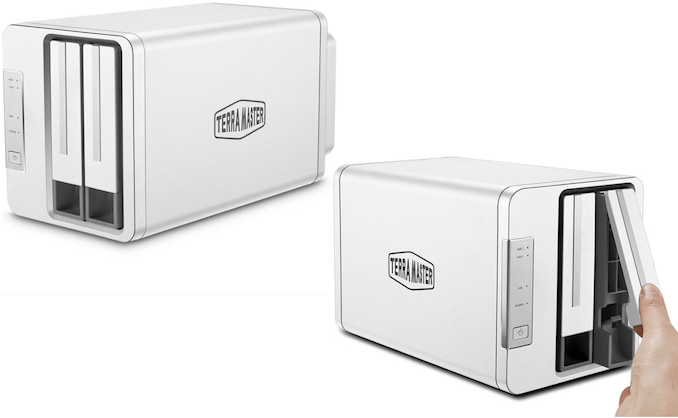


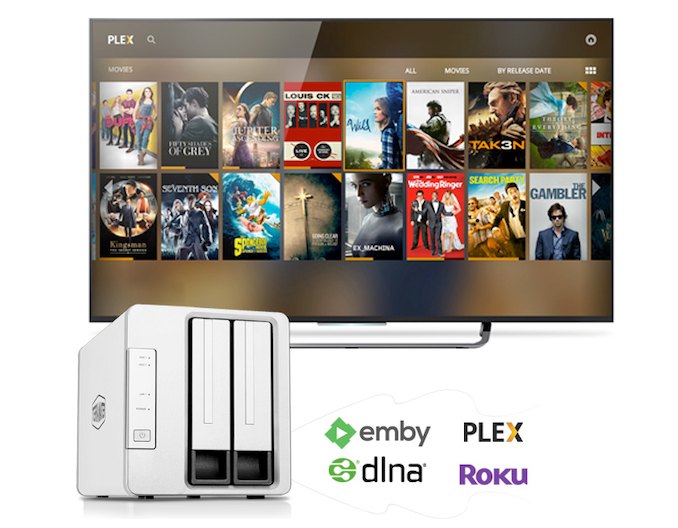

 Quote
Quote
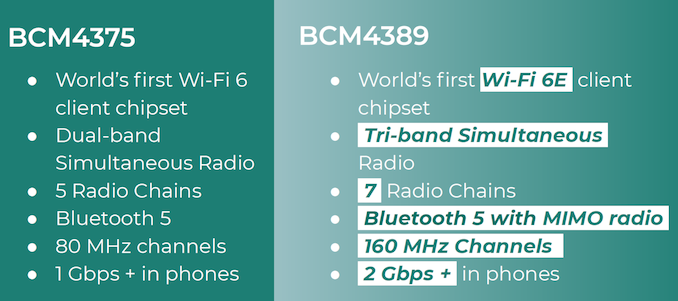






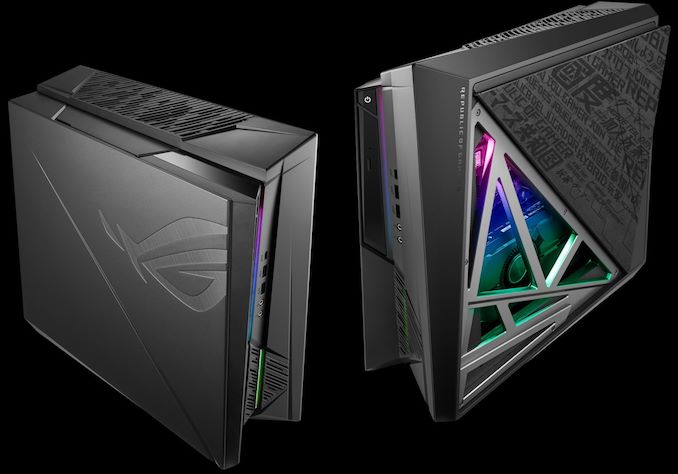
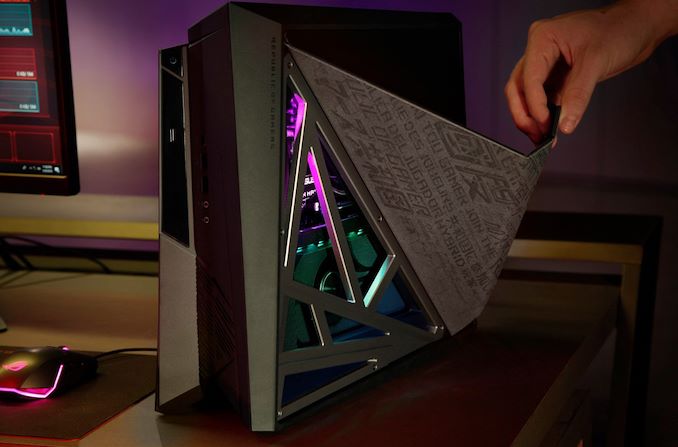
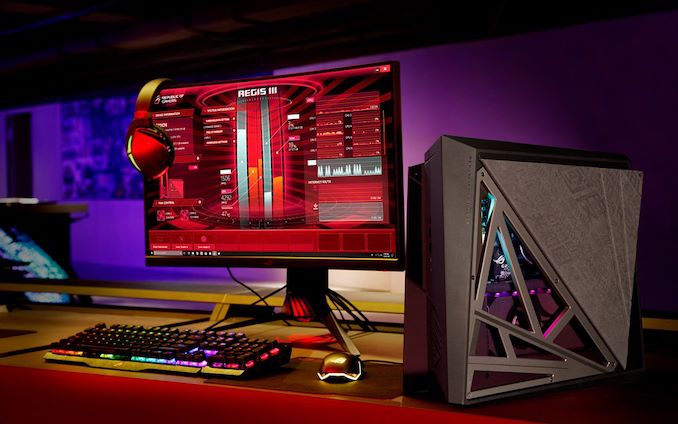





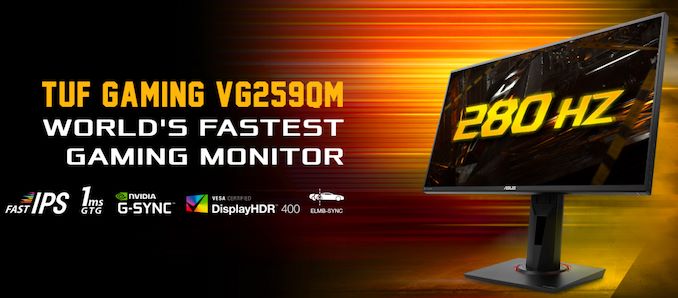

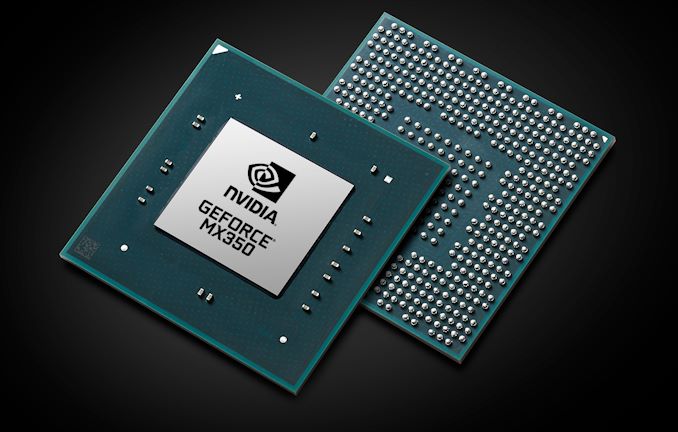

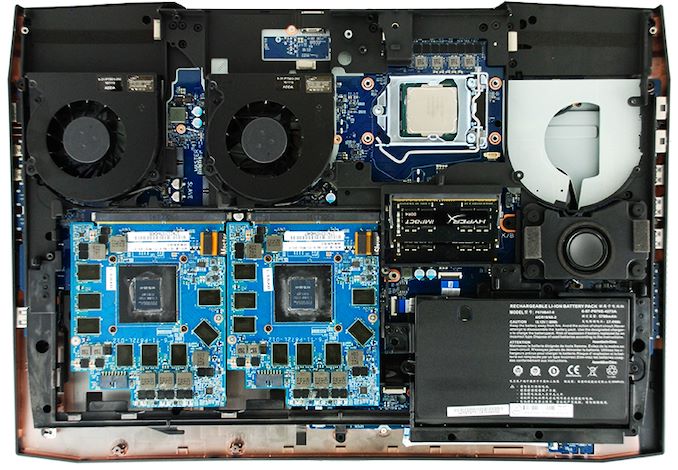
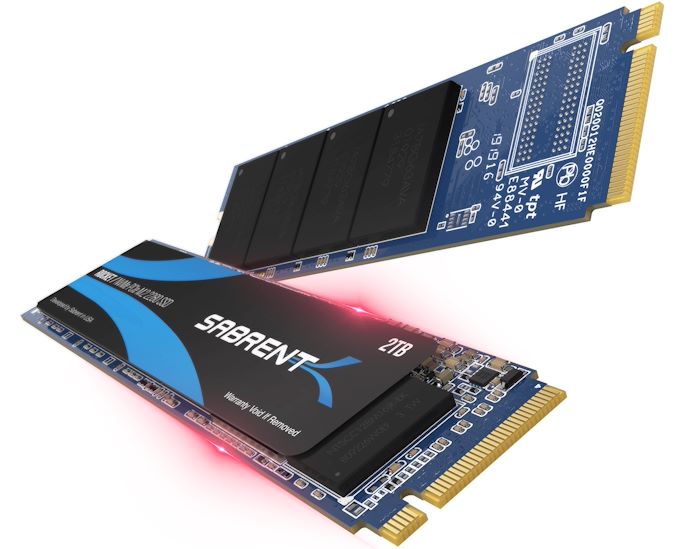
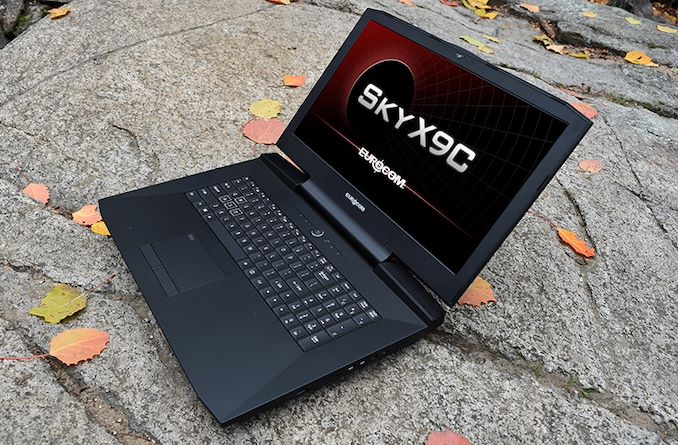
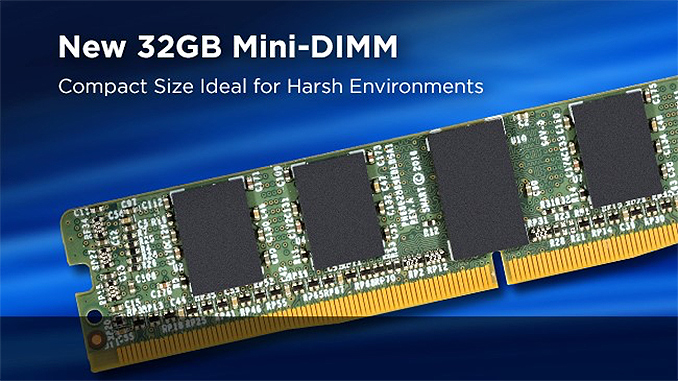
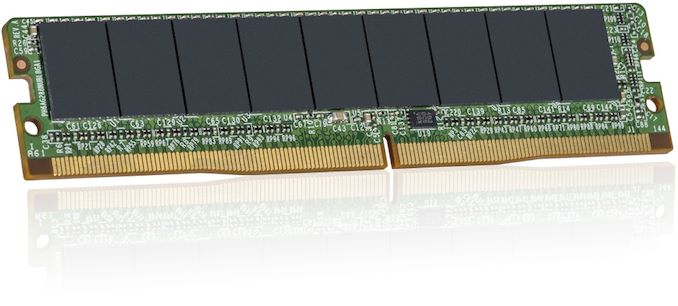
















Bookmarks